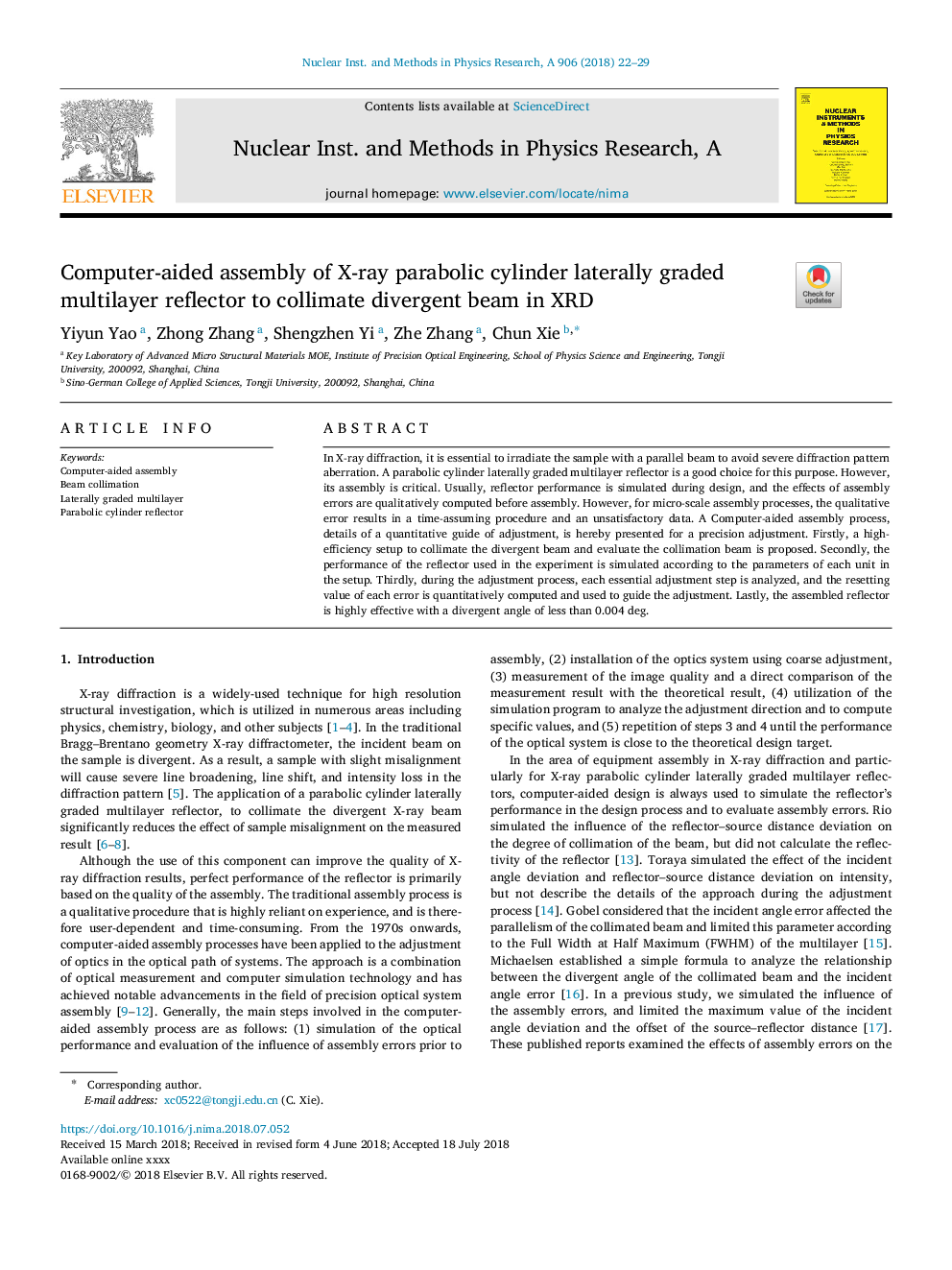| Article ID | Journal | Published Year | Pages | File Type |
|---|---|---|---|---|
| 8165864 | Nuclear Instruments and Methods in Physics Research Section A: Accelerators, Spectrometers, Detectors and Associated Equipment | 2018 | 8 Pages |
Abstract
In X-ray diffraction, it is essential to irradiate the sample with a parallel beam to avoid severe diffraction pattern aberration. A parabolic cylinder laterally graded multilayer reflector is a good choice for this purpose. However, its assembly is critical. Usually, reflector performance is simulated during design, and the effects of assembly errors are qualitatively computed before assembly. However, for micro-scale assembly processes, the qualitative error results in a time-assuming procedure and an unsatisfactory data. A Computer-aided assembly process, details of a quantitative guide of adjustment, is hereby presented for a precision adjustment. Firstly, a high-efficiency setup to collimate the divergent beam and evaluate the collimation beam is proposed. Secondly, the performance of the reflector used in the experiment is simulated according to the parameters of each unit in the setup. Thirdly, during the adjustment process, each essential adjustment step is analyzed, and the resetting value of each error is quantitatively computed and used to guide the adjustment. Lastly, the assembled reflector is highly effective with a divergent angle of less than 0.004 deg.
Keywords
Related Topics
Physical Sciences and Engineering
Physics and Astronomy
Instrumentation
Authors
Yiyun Yao, Zhong Zhang, Shengzhen Yi, Zhe Zhang, Chun Xie,
